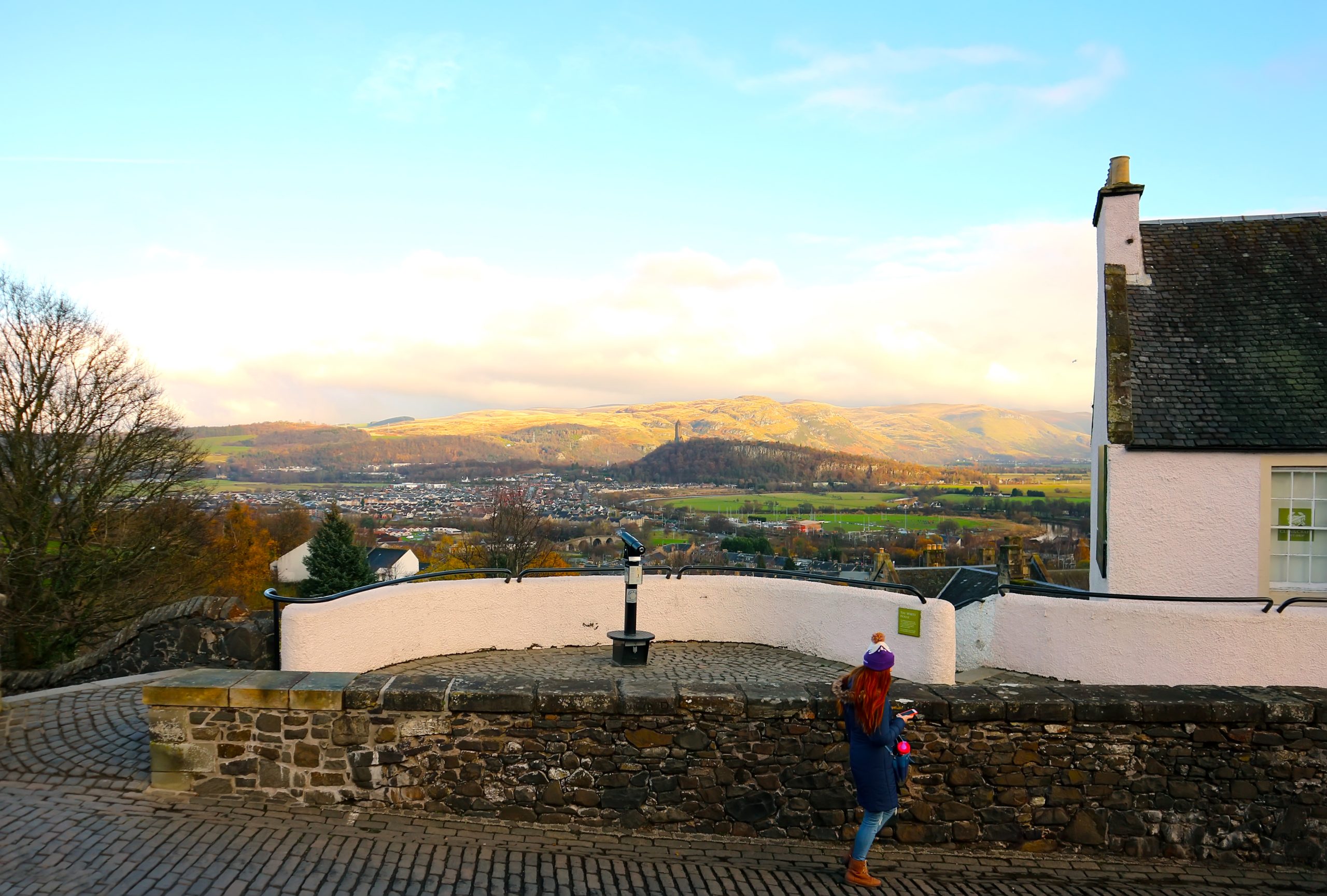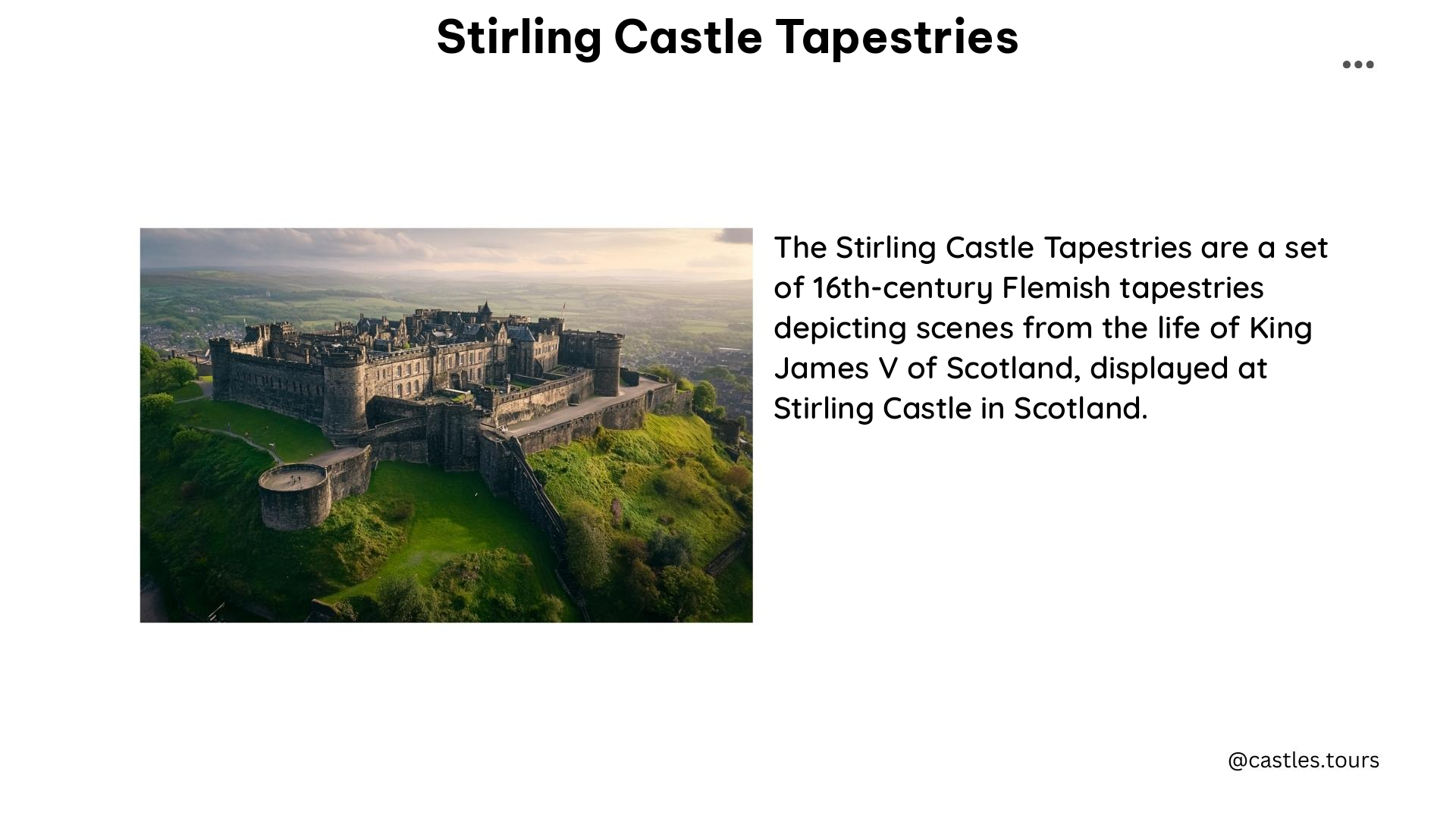The Stirling Castle tapestries are a set of seven hand-woven tapestries that hang in the Queen’s Inner Hall in the royal palace. They are a recreation of the Hunt of the Unicorn series, which were created in the early 1500s. The tapestries were commissioned by Historic Scotland and took 13 years to complete at a cost of £2 million.
What are the Stirling Castle Tapestries?

The Stirling Castle tapestries are a set of seven hand-woven tapestries that hang in the Queen’s Inner Hall in the royal palace at Stirling Castle. These tapestries are a recreation of the Hunt of the Unicorn series, which were created in the early 1500s. The project was managed by West Dean College in West Sussex, and the weavers worked in two teams, one based at the college and the other in a purpose-built studio in the Nether Bailey of Stirling Castle.
Key Facts about the Stirling Castle Tapestries

| Fact | Details |
|---|---|
| Location | The tapestries hang in the Queen’s Inner Hall in the royal palace at Stirling Castle. |
| Design | They are a recreation of the Hunt of the Unicorn series, which were created in the early 1500s. |
| Cost | The project cost £2 million. |
| Duration | It took 13 years to complete the tapestries. |
| Management | The project was managed by West Dean College in West Sussex. |
| Weaving Teams | The weavers worked in two teams, one based at the college and the other in a purpose-built studio in the Nether Bailey of Stirling Castle. |
| Materials | Traditional techniques and materials were used, with mercerised cotton taking the place of silk to preserve its color better. The wool was specially dyed at West Dean College. |
The Maiden and Unicorn Scene
The design of the maiden and unicorn scene in the tapestries was inspired by woodcuts, engravings, and other contemporary art. Ruth Jones, the maker responsible for designing and weaving this scene, drew inspiration from the “Sight” panel from The Lady and the Unicorn series. The scene depicts a seated maiden with the unicorn in her lap.
Historical Significance
The original Unicorn Tapestries were woven in the South Netherlands around 1495–1505 and are now housed at The Cloisters in New York. They were possibly designed in Paris and show a group of noblemen and hunters. The tapestries were owned by the La Rochefoucauld family of France for several centuries before being purchased by John D. Rockefeller Jr. in 1922.
Restoration and Reproduction
The original tapestries were cleaned and restored in 1998, and a series of high-resolution digital photographs were taken of both sides. The restoration process involved removing the linen backing, bathing the tapestries in water, and discovering that the colors on the back were in even better condition than those on the front.
Visitor Information
Stirling Castle is open from 9:30 AM to 6:00 PM from April to September and from 9:30 AM to 5:00 PM from October to March. The admission prices vary depending on the time of year and visitor type, so please check the official website for the most up-to-date information.
Conclusion
The Stirling Castle tapestries are a captivating and historically significant masterpiece that transports visitors back in time. The attention to detail, the use of traditional techniques, and the dedication of the weavers have resulted in a stunning recreation of the Hunt of the Unicorn series. Whether you’re a history buff, an art enthusiast, or simply someone who appreciates the beauty of craftsmanship, the Stirling Castle tapestries are a must-see attraction for any castle touring enthusiast.
